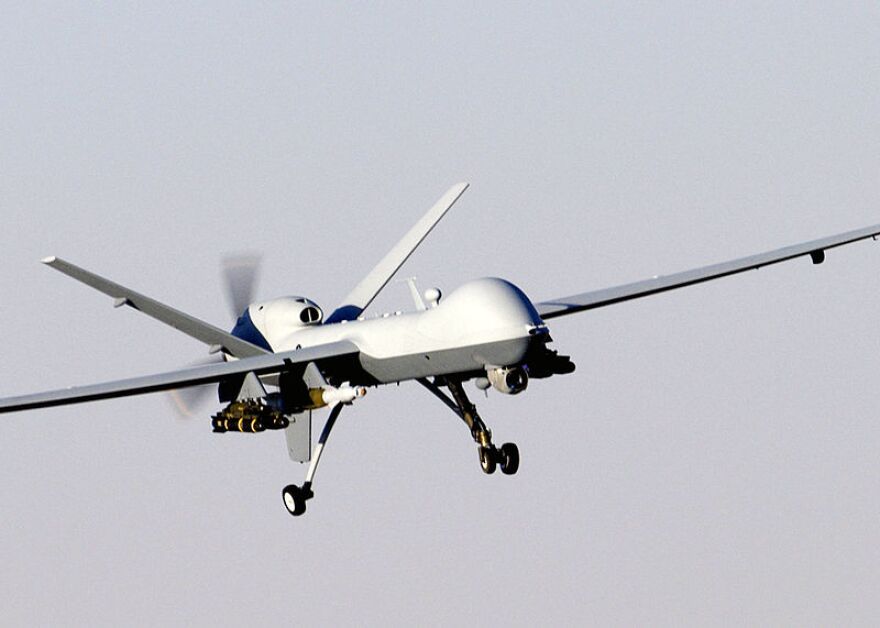Last week, President Obama laid out his strategy for a new phase in the war on terror. He repeated his belief that Guantanamo Bay should be closed and cited the political reasons for his failure to do so until now.
Obama also outlined a new policy that scales back the use of drones to kill suspected national security threats. What are the laws and policies that President Obama faces?
“The problem is Congress, for three consecutive years, has denied the President funding to move the detainees from Guantanamo Bay,” Scott Silliman said in an interview on The State of Things.
Silliman is an appellate judge at the United States Court of Military Commission Review and a professor at Duke Law School. He is one of two civilians that President Obama appointed to that court. Silliman and the other judges review the transcripts of the Guantanamo trials.
What can be done with the 166 detainees who are still imprisoned at Guantanamo?
Silliman explains that the detainees are not a homogenous group.
“There are three groups of detainees. There’s a small number, perhaps 25 to 30, for which there is some evidence of criminality. They can be prosecuted in a military commission or, if Congress will rescind their statute, in a US court. There are some who have been cleared for release, but no country is willing to step up and take them. The most difficult group are those for which we can’t prosecute, for whatever reason, but they are deemed to be too dangerous to turn loose. That’s called the legacy group of detainees,” Silliman said.
What makes the legacy group of detainees too difficult to prosecute, but too dangerous to turn loose? According to Silliman, there may be evidence against these detainees, but the evidence is likely tainted.
“That evidence may be procured by torture, cruel and degrading human treatment. So that either in a military commission or a trial in this country, you couldn’t use that evidence,” Silliman said.
And how credible is the intelligence that we have on these detainees?
“We might have information. But information and evidence are two different things,” said David Schanzer. He is a professor at Duke’s Sanford School of Public Policy and the director of the Triangle Center of Terrorism and Homeland Security.
“Evidence is information that’s actually admissible in a judicial proceeding of some sort. Information can be gleaned from hearsay evidence, or maybe an intelligence source or method that we can’t introduce into court,” Schanzer said.
However, critics of Guantanamo Bay dispute the categories placed upon the detainees.
“I question the designation of “too dangerous to release.” Is that a designation that holds up in other courts? Because according to the Center for Constitutional Rights, that’s essentially a made up designation. It means nothing,” said Ariana Vigil, a professor in the Department of Women’s and Gender Studies at University of North Carolina Chapel Hill.
Under both former President George W. Bush and Obama administrations, international laws of war have been applied to Guantanamo detainees and to members of terrorist groups around the world.
“The Supreme Court said in a 2004 case…that if you’re at a time of war, if Congress has authorized us to use force against al Qaeda, that there is the right to detain until the end of hostilities. In some ways, that’s what President Obama was beginning to get at. The hostilities are not the same now as they were at the time of 9/11, and we need to begin to adjust our policies and our thinking in light of that reality,” said Schanzer.



